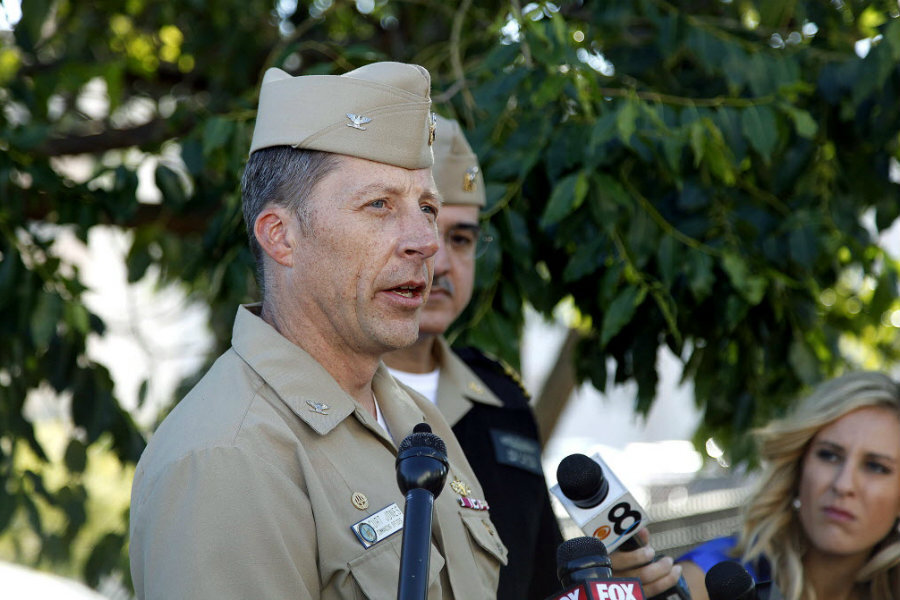Navy finds no signs of shooting at San Diego medical center, lifts lockdown
Loading...
| SAN DIEGO
Authorities found no gunman or signs of a shooting on Tuesday after receiving a report from a Department of Defense employee that shots had been heard at one of the nation's largest Naval medical facilities.
The report of a shooting grabbed attention across the country and led to the lockdown of the Naval Medical Center San Diego in Balboa Park, near the San Diego Zoo, and three nearby schools.
Authorities lifted the lockdown at the schools and hours later at the facility after military police finished a thorough sweep of the building in question.
Fears were heightened when the medical center posted on its Facebook page: "An active shooter has just been reported in building #26 at Naval Medical Center San Diego. All occupants are advised to run, hide or fight."
The unidentified Department of Defense employee reported hearing three gunshots just before 8 a.m. on the sprawling 78-acre campus, where Building 26 houses administrative offices, a gymnasium and dormitories for combat-wounded veterans in long-term care. As many as 800 people are in the building at that time, Navy officials said.
All non-emergency personnel were asked to stay away from the area, and traffic backed up around the facility during the morning rush hour.
Military personnel searched the structure for about two hours before saying there were no initial signs of a shooting.
The base remained on lockdown for nearly six hours as military police went room to room and led personnel out of the building. The hospital began receiving patients late Tuesday afternoon, and building 26 reopened.
Capt. Curt Jones, commanding officer of Naval base San Diego, said there was construction going on nearby, but he did not know if that noise was mistaken for the sound of gunshots. The report was made in person, and everyone did as they have been trained to do, Jones said.
"We want people, if they see something or hear something, we want them to tell us," Jones said.
At least seven law enforcement agencies – including the FBI, the US Department of Homeland Security, and police departments – assisted.
"Obviously there's been numerous events throughout the country and truly around the world, so we take this all very, very seriously," he said.
After the initial search, TV images showed uniformed Navy personnel walking outside the medical facility with their hands in the air as base police patted them down as a precaution.
More than 6,500 military, civilian, contractor, and volunteer personnel work at the 272-bed, multi-specialty hospital and ambulatory complex.
Sharie Jarsulic, a teacher at the base child care center, waited in her car outside the main gate after being denied entry. Her work day begins after employees drop off about 200 children.
The response was justified, she said, pointing out that the hospital treats mentally ill people and military members traumatized by war.
"They acted the right way," she said while waiting for the gate to reopen. "It could be someone inside or in the barrack, and they could have just went off."
A number of shootings and threats have left military and civilian officials grappling with finding the difficult balance of not overreacting and causing unnecessary upheaval in people's lives versus not being too lax in responding.
Naval personnel worldwide have been doing routine trainings on how to respond to such incidents ever since a lone gunman fatally shot 12 people and injured three others at the Washington Navy Yard in 2013.
Another drill is scheduled for Navy personnel in San Diego in coming weeks.
___
AP writers Christopher Weber and John Antczak in Los Angeles contributed to this report.







